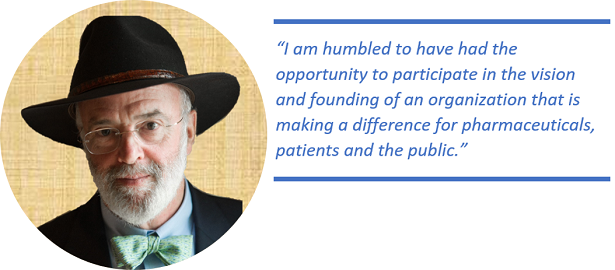LEWIS B. KINTER, PhD, DABT, FATS
IQ Board of Directors Chair (2012-2014)
IQ Preclinical Safety Leadership Group (PSLG, now DruSafe) Chair (2010)
IQ PSLG Member (2010-2013)
Principal, Green Lawn Professional Scientific Consulting
Senior Director, Regulatory Toxicology, AstraZeneca (Ret.)
PhD, Medical Physiology, Harvard University Medical School
WHEN DID YOU FIRST GET INVOLVED WITH THE IQ CONSORTIUM?
I was involved in the early meetings in 2009 with Faegre Drinker Biddle & Reath in an effort to establish a platform where pharmaceutical companies could be fully transparent and collaborate regarding human safety, while allowing companies the ability to remain competitive on efficacy. The discontinuation of the PhRMA Preclinical Safety Leadership Committee (PSLC) resulted in the need to identify a new 'safe haven' for a collaborative space wherein members could work actively to improve all aspects of safety of pharmaceuticals for the benefit of patients, the public, and the industry.
WHAT WERE THE MAIN CHALLENGES THEN AND HOW HAS IQ MET MANY OF THEM?
Convincing pharmaceutical companies previously involved in the PSLC to collaborate in a new untested consortium was a challenge. Collaboration (in the pharma industry) was not universally embraced due to potential conflicts of interest and loss of competitive advantage. Recruiting larger companies imbued credibility into the nascent consortium, making membership more appealing to smaller companies. The IQ Consortium has close to 40 member companies; I remember when we were hoping for 10! That IQ is a growing and vibrant organization speaks volumes about future positioning to assist the industry to address key issues requiring collaboration.
FOR YOU, WHAT HAVE BEEN THE GREATEST DEVELOPMENTS IN INNOVATION AND QUALITY IN PHARMACEUTICAL DEVELOPMENT IN THE LAST 10 YEARS?
The realization and operationalization that drug-associated adverse events are not random or unpredictable but are the result of drug interactions with specific molecular targets and cellular pathways. In the early days of my career, we screened new drugs in animal and animal tissue bioassays to record biological activities (muscle contraction, relaxation, etc.) and potential therapeutic utilities (diuresis, blood pressure lowering, prevention of drug-induced seizure, etc.) – discerning molecular target or mechanism of action was unknown and unimportant. In the 1980s, the Molecular Revolution occurred and pharmacology was rapidly transformed from phenomenological bioassay to molecular target directed research. It turned out that toxicology/safety assessment was much, much slower to embrace molecular principles, in part because of the mandated regulatory animal bioassays needed to get new products approved. The emerging result of the molecular transformation of pharmaceutical R&D of nearly a half-century ago is realization that a relatively small number of molecular targets and pathways actually support new therapeutically useful drugs. The same is true for toxicology/safety assessment – that a relatively small number of ‘promiscuous’ molecular targets and ‘vulnerable’ pathways are responsible for the majority of adverse effects. The Learning? Efficacy and Safety, Pharmacology and Toxicology are just two sides of the same coin.
WHAT ARE YOUR FONDEST MEMORIES?
The knowledge, efficiency, cordiality and support of the Faegre Drinker Secretariat team!
February 2021
